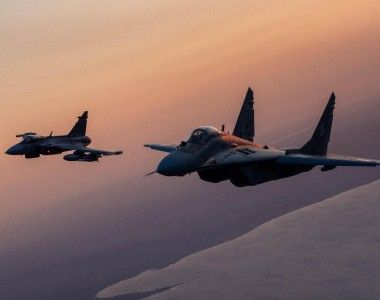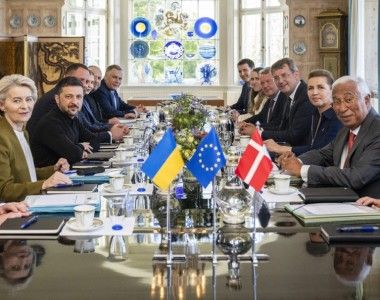More Soldiers in the Polish Armed Forces. New Data [EXCLUSIVE]

Photo. Aleksander Perz/18th Mechanized Division
The number of soldiers serving in the Polish Armed Forces has been going upwards in recent years. How many soldiers do we have now? The Defence24.pl editing team has received fresh data on that matter from the Polish Ministry of Defence.
According to the response given by the Polish Ministry of Defence to our inquiry, on 28th June 2024, the Polish Armed Forces consisted of:
- Almost 139.5 thousand professional soldiers;
- More than 4.8 thousand professional soldiers in training;
- More than 2.5 thousand soldiers in Voluntary General Military Service (DZSW, Dobrowolna Zasadnicza Służba Wojskowa) in training;
- Almost 17.5 thousand soldiers in Voluntary General Military Service (DZSW, Dobrowolna Zasadnicza Służba Wojskowa);
- Almost 35 thousand soldiers in Territorial Military Service (TSW, Terytorialna Służba Wojskowa).
This brings the total to almost 200,000 soldiers, according to the new methodology for counting manpower. This methodology was introduced a few years ago when the number of soldiers in territorial military service and 12 months of voluntary general military service started to increase. In contrast, under the provisions of the Homeland Defence Act, students in the first year (12 months) of military universities became soldiers in voluntary general military service in their training, and from the second year upwards became professional soldiers in training.
Previously, the Ministry of Defence and the previous Minister of Defence himself also reported the total number of soldiers counted in this way. For instance, in recent months the troop numbers were as follows:
- 164 thousand on 31st December 2022;
- 186 thousand on 4th October 2023;
- 187 thousand on 20th October 2023;
- 193,646 on 20th November 2023.
As the data above shows, the number of soldiers in standing units, and the territorial components, has been on a constant rise.
As a reminder, conscription for basic military service was suspended on 1st January 2010 and the last conscripts were released home in August 2009. Only the „professional” soldiers remained in the military service. 95,439 remained in service, on 31st December 2010. In the coming years, that number was steadily growing. The 100 thousand barrier was broken as late as 2017, at 101,578.
In the coming years, the number of professional soldiers grew faster, to reach 113,586 in late 2021. Implemented in 2022, the aforementioned Homeland Defence Act resulted in the inclusion of second-year and senior cadets of military academia in this statistic. We had 118,340 professional soldiers at the end of 2022 and already 134,362 at the end of 2023.
Noticeable Growth
Comparing these numbers with the current state, i.e. a total of around 144,300 professional soldiers, it turns out that we have gained 26,000 (sic!) professional soldiers in the last 18 months. This includes 16,000 troops throughout 2023 (12 months) and 10,000 in the first six months of 2024.
The increase in the personnel growth rate is also evidenced by data on the annual numbers of appointments and dismissals from service of professional soldiers:
- in 2021, 9,651 professional soldiers were recruited and 6,165 were dismissed;
- in 2022, 13,742 professional soldiers were recruited and 8,988 were dismissed;
- in 2023, 25,190 professional soldiers were recruited and 9,168 were dismissed;

Photo. Jarosław Ciślak/Defence24.pl
It is also worth noting the structure of the number of professional soldiers by corps. At the end of 2023, among those 134,362 professional soldiers mentioned, there were:
- 134 generals;
- 22,574 officers;
- 52,223 NCOs;
- 59,421 privates;
Notably, the non-commissioned officer corps has grown the most over the 2022-2023 period, as it has increased by almost 12,000 soldiers. The private corps increased by more than 7,000 and the officer corps by 1,500.
Following the suspension of conscription service, the Polish Armed Forces on professional service entirely. It very quickly became apparent that the number of peacetime soldiers was insufficient. Therefore, the first idea to increase the size of the military was to establish the National Reserve Force (NSR, Narodowe Siły Rezerwowe). This force consisted of volunteers from among the reservists who contracted for military service in the reserves and remained available to perform missions in the event of real military and non-military threats, both at home and abroad.
After a dozen years or so, the NSR proved to be an inefficient form of providing personnel for the army in peacetime and was gradually phased out. The NSR structure has been replaced by the Territorial Defence Forces (WOT), under which both professional soldiers and soldiers of territorial military service serve. The number of territorial troops has steadily increased from 4,200 in 2017 to the current 35,000, with the growth rate halting in 2022. At the end of that year, there were 31,730 and at the end of 2023, there were 34,945 soldiers in the territorial structures. As it can be seen, the number has remained relatively unchanged in the first half of 2024.
However, „territorial military service” soldiers only perform this service periodically during the training cycle and emergency call-ups to territorial defence units. The newly-launched Voluntary General Military Service also became another source of increasing the number of troops. It is served for 12 months by volunteers, who then decide whether they return home or seek to move into the professional soldier corps. It is a little different for soldiers of voluntary general military service in training. After completing their first year of study (12 months), they automatically become professional soldiers-in-training and continue their education, being enrolled in studies at military academia. There are currently 2,500 of them and they will soon move on to the aforementioned professional service-in-training. The remaining 17.5 thousand soldiers of the Voluntary General Military Service, on the other hand, constitute a headroom reserve, to further increase the number of professional soldiers.

Photo. Jarosław Ciślak/Defence24.pl
During the tenure of the previous Minister of National Defence, an announcement was made that Poland would have a 300,000-strong army in 2035. According to a public presentation by the General Staff of the Armed Forces, these 300,000 soldiers are to consist of:
- 187,127 professional soldiers;
- 9,373 professional soldiers in training;
- 3,500 soldiers enrolled in Voluntary General Military Service, in training;
- 50,000 soldiers enrolled in Voluntary General Military Service;
- 50,000 thousand soldiers in Territorial Military Service (TSW, Terytorialna Służba Wojskowa).
The new Head of the Polish MoD has not questioned the aforesaid numbers, which may mean the plan is still valid and will continue. If this is the case, the military needs to increase by more than 100,000 troops between now and 2025, including:
- Ca. 48 thousand professional soldiers;
- Ca. 4 thousand professional soldiers, in training;
- Ca. 1 thousand soldiers in Voluntary General Military Service, in training;
- Ca. 32 thousand soldiers in Voluntary General Military Service;
- Ca. 15 thousand soldiers in Territorial Military Service.
However, is this realistic from the point of view of Polish defence spending?
The new military equipment that is currently being procured, broadly and in large numbers, will require increasing amounts of money in the future to operate, overhaul and modernise. To handle the MRO, an increase in the number of soldiers and civilian employees is needed, but this will require ever-increasing personnel expenditure on salaries, wages, and derivatives.
The increasing number of soldiers will result in an increasing number of retirees and pensioners, and thus an increase in the amount of benefits spent on them. The decision to allow professional privates to remain in service beyond the assumed 12 years has contributed to the increase in the number of retirement pays, as the aforesaid decision entitles them to a pension once they have reached 15 years of service. Of course, it should be noted that, at the same time, for newly enlisted soldiers, the limit for acquiring retirement rights was increased from 15 to 25 years. To sum up, the personnel costs of keeping soldiers, officers, civilian employees, pensioners, and pensioners burdening the Ministry of Defence budget are constantly growing, and they will grow even more. Given this, it is not surprising to see sequestration in the defence procurement programmes financed by the Ministry of Defence’s budget, although this budget increases every year. The Armed Forces Support Fund has been helpful so far, in financing the procurement efforts.
Unfortunately, the MoD leadership do not want to share even a general vision of the Armed Forces in 2035. The numbers of equipment, troops, civilian employees, and so on. It appears that the Ministry of Defence initially simulated spending only on equipment acquisitions, without simulating the multi-year financial burden for its MRO, LCC, the increase in the needed housing and training infrastructure, and the support needed for the increased military personnel and thus the increased number of pensioners. One can only hope that the current Ministry of Defence is trying to piece this together and will soon provide taxpayers with some, albeit general, information on the plans for our Armed Forces over the next 10 years.
Collaborative Effort: Jakub Palowski



